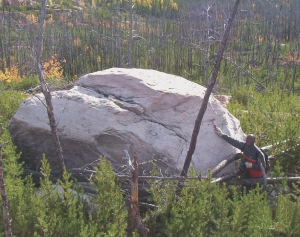Joint-venture partners Tribune Uranium(TCB-V, TCBZF-O) and Fission Energy (FIS-V, FSSIF-O) have planned a 700-line-km airborne geophysical survey and a 1,000- metre drill program for their Grey Willow Point and Falling Sand Point uranium claims, in northeastern Alberta.
Grey Willow and Falling Sand are apart of the companies’ North Shore uranium project, a 1,100-sq.-km property along the northwest edge of the Athabasca basin, about 10 km west of Cameco’s (CCO-T, CCJ-N) Maurice Bay uranium deposit.
The drill program will test several geophysical and geochemical targets.
North Shore has been explored in the past, with historical exploration including 150 shallow drill holes averaging less than 30 metres. More than 200 boulders were found with up to 0.95% U3O8 and some airborne magnetic, very low frequency (VLF) and radiometric surveys were also carried out.
The companies expect North Shore will be similar to basement-hosted, structurally controlled uranium mineralization, and would be associated with structurally focused hydrothermal alteration systems.
Tribune has already completed an 8,000-line-km airborne magnetic and VLF survey, which it says identified hundreds of electromagnetic (EM) responses that could be basement structures.
The follow-up survey will provide high-resolution magnetic and EM data that will be integrated to assist with target selection for the drill program.
Drill targets include cross-cutting structures with anomalous radioactivity and alteration that have never been tested at depth.
When the drill program is finished, each hole will be logged with a poly gamma probe and sampled for geochemical and clay analysis. The samples will be sent to a lab in Saskatoon, Sask., for further analysis. Samples will also be collected for short-wave infrared spectrometry analysis.


Be the first to comment on "Tribune, Fission, hunt for North Shore targets"